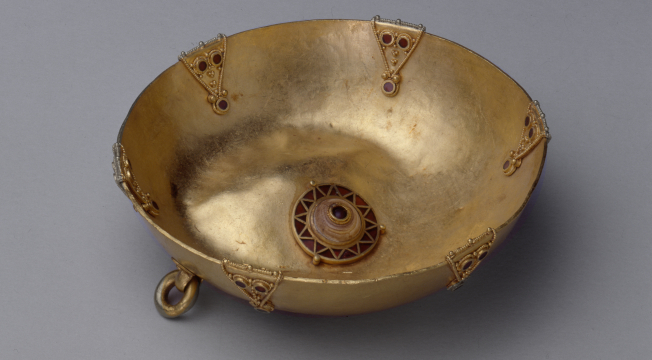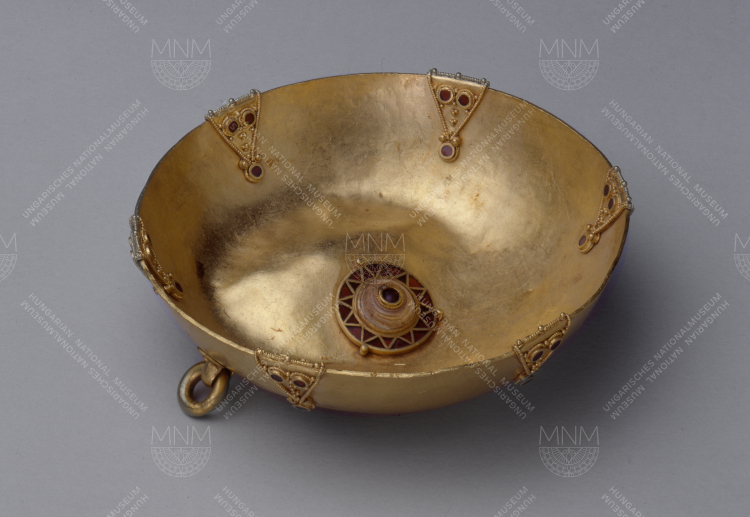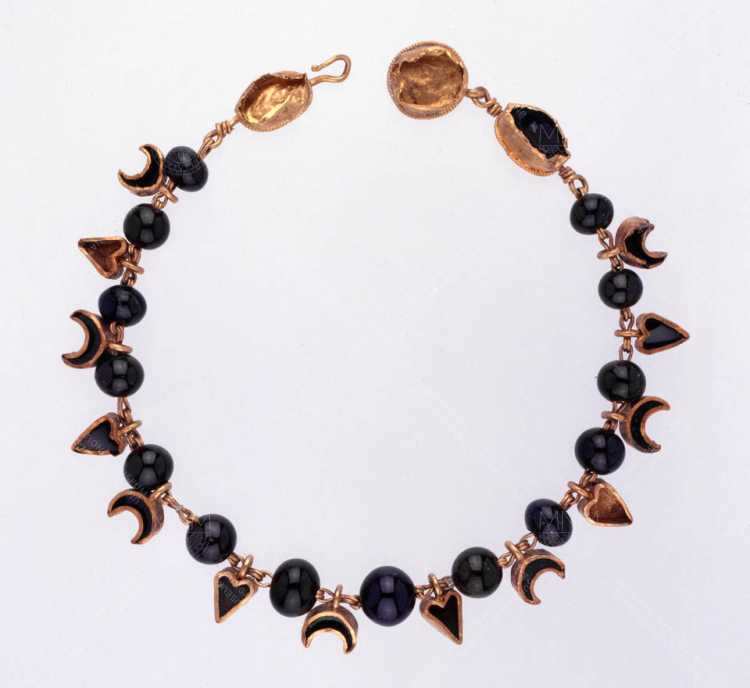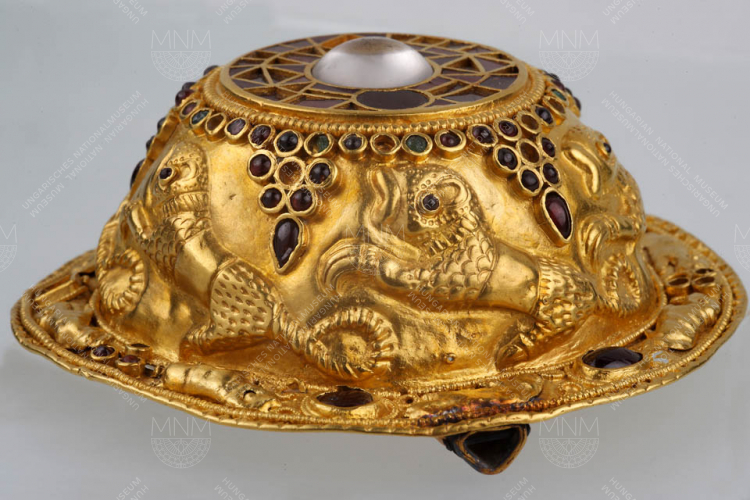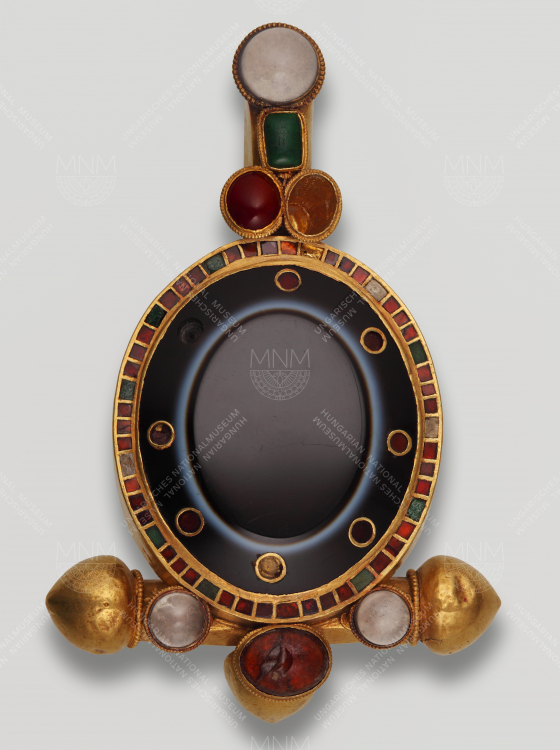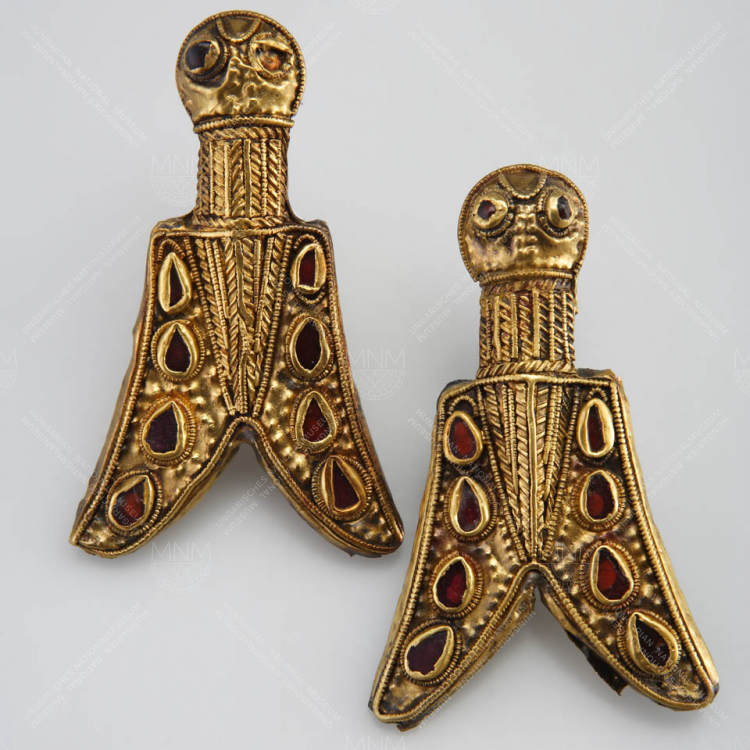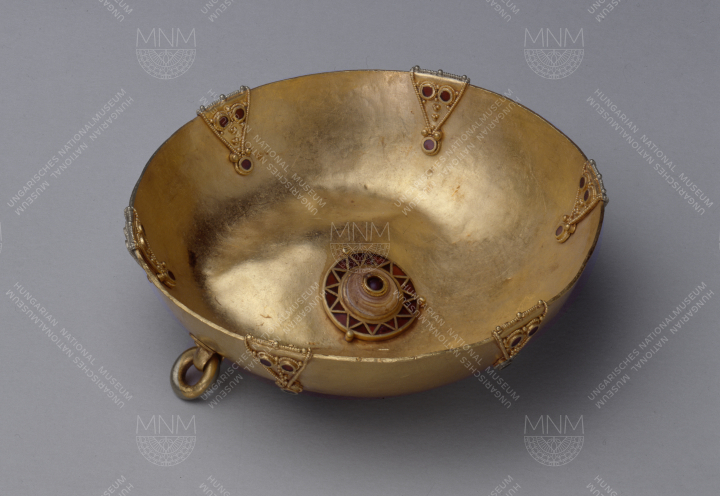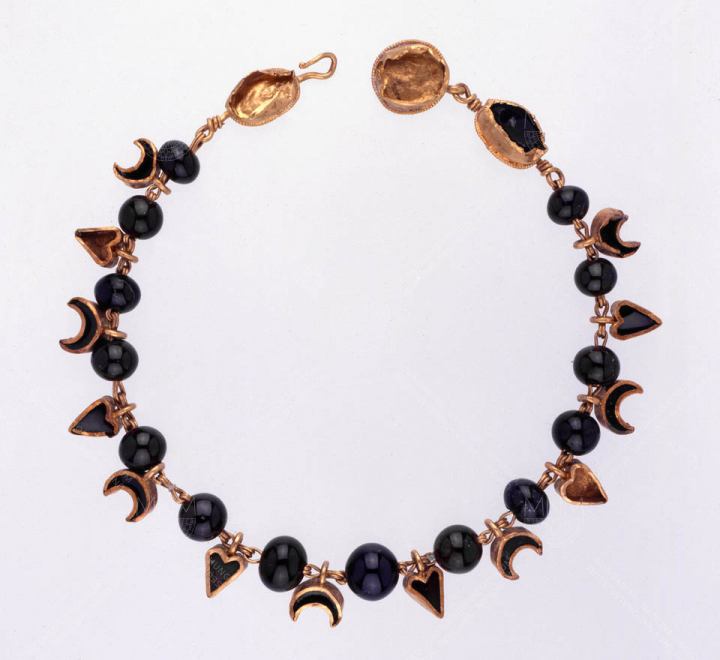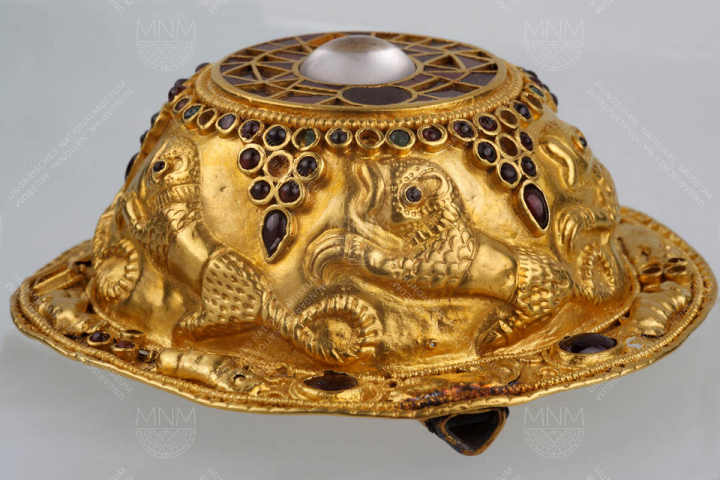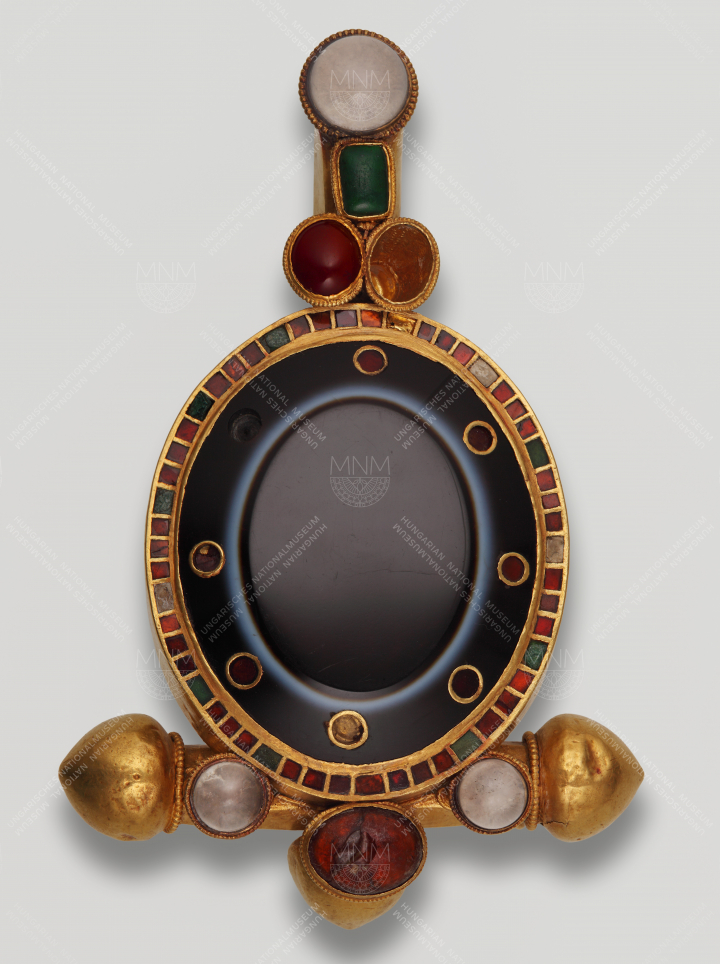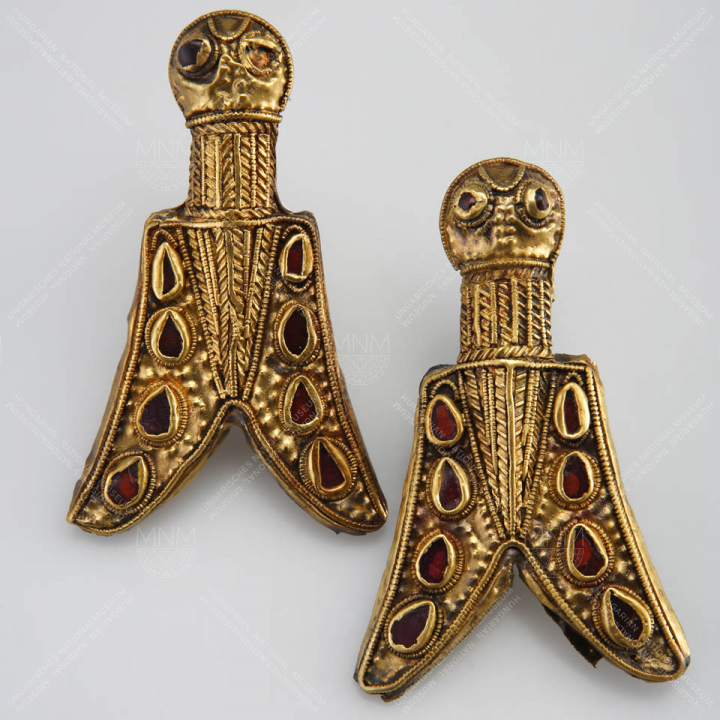
Room 7
In the first century and a half of the Great Migrations period, peoples arrived in the Carpathian Basin from different directions. Huns, Ostrogoths, Heruli, Scirii, and Lombards settled in this region for longer or shorter periods. Showing the wealth and taste of the upper strata of these barbarian societies, a good proportion of the artefacts displayed in this room consists of jewellery and power insignia artistically made from precious metals. Everyday life in these societies is shown by way of their agriculture and their cottage industry and handicrafts endeavours (bone carving, weaving and spinning, smiths’ work, pottery), while the cemeteries of the period are presented by means of the grave of a warrior buried in the 6th century.
interesting facts:
Cranial deformation was a custom characteristic of the territories to the north of the Black Sea in the 4th– 5th centuries CE. It reached the Carpathian Basin with the arrival there of the Huns. The fibula was a decorative device for fastening garments. This type of artefact is found among the objects left behind by the Huns, Gepids, and Lombards.







